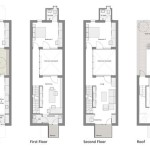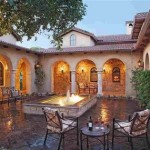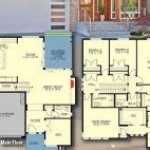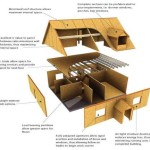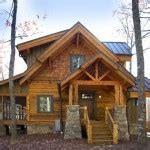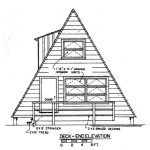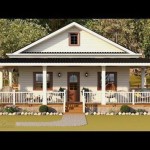Victorian Style House Plans refer to architectural blueprints and designs that embody the distinct characteristics of the Victorian era, a period spanning from the 1830s to the early 1900s. These plans provide a comprehensive guide for constructing or renovating homes in the Victorian architectural style, which is renowned for its ornate details, asymmetrical facades, and spacious interiors.
Victorian Style House Plans encompass a wide range of architectural styles, including Gothic Revival, Italianate, and Queen Anne. Each style features its own unique elements, such as pointed arches and stained glass windows in Gothic Revival, rounded arches and elaborate moldings in Italianate, and intricate woodwork and asymmetrical shapes in Queen Anne. These plans allow homeowners and architects to create custom-designed Victorian-era homes that reflect their individual tastes and preferences.
When creating or selecting Victorian Style House Plans, there are several important points to consider:
- Asymmetrical Facades
- Ornate Details
- Spacious Interiors
- Bay Windows
- Wraparound Porches
- Steeply Pitched Roofs
- Decorative Gables
- Stained Glass Windows
- Intricate Millwork
These elements contribute to the distinctive character and charm of Victorian architecture.
Asymmetrical Facades
Asymmetrical facades are a defining characteristic of Victorian Style House Plans. They create a visually dynamic and distinctive exterior that sets Victorian homes apart from other architectural styles.
- Varied Rooflines: Victorian homes often feature multiple rooflines with different heights and pitches. This asymmetry adds visual interest and depth to the facade.
- Bay Windows and Gables: Bay windows and gables project outward from the main structure of the house, creating a sense of depth and dimension. They also provide additional space and light to the interior.
- Varying Window Sizes and Shapes: Victorian facades often incorporate windows of various sizes and shapes, such as arched, rectangular, and bay windows. This asymmetry adds visual appeal and breaks up the monotony of a symmetrical facade.
- Off-Center Elements: Entrances, porches, and chimneys are often placed off-center on Victorian facades. This asymmetry creates a focal point and draws the eye to specific architectural features.
Asymmetrical facades are a key element of Victorian Style House Plans, contributing to the unique and visually captivating character of Victorian architecture.
Ornate Details
Victorian Style House Plans are renowned for their intricate and elaborate ornamentation. These details add a sense of grandeur and sophistication to Victorian architecture, creating homes that are both visually stunning and timeless.
Exterior Ornamentation
The exterior of Victorian homes is often adorned with a variety of ornate details, including:
- Gingerbread Trim: Elaborate gingerbread trim, featuring intricate cutouts and decorative designs, is a common feature of Victorian homes. It is often used to decorate gables, eaves, and porches.
- Bay Windows: Bay windows, which project outward from the main structure of the house, are often adorned with decorative moldings and cornices.
- Decorative Gables: Gables, the triangular sections of wall at the end of a pitched roof, are often decorated with intricate bargeboards and finials.
- Porches and Verandas: Porches and verandas are often supported by decorative columns and railings, and may feature elaborate fretwork and spindles.
Interior Ornamentation
The interior of Victorian homes is also characterized by ornate details, such as:
- Elaborate Moldings: Victorian interiors often feature elaborate moldings around doors, windows, and ceilings. These moldings may be simple or highly decorative, and may incorporate floral or geometric designs.
- Ornamental Fireplaces: Fireplaces are often a focal point of Victorian interiors, and are often adorned with decorative mantels, surrounds, and tiles.
- Stained Glass Windows: Stained glass windows are a common feature of Victorian homes, adding color and light to the interior. They may depict religious scenes, landscapes, or abstract designs.
- Chandeliers and Light Fixtures: Victorian homes often feature elaborate chandeliers and light fixtures, which add a touch of elegance and sophistication to the interior.
The combination of exterior and interior ornamentation creates a sense of grandeur and sophistication that is synonymous with Victorian Style House Plans. These homes are not only beautiful, but also timeless, and continue to be admired and sought after by homeowners today.
Spacious Interiors
Victorian Style House Plans are known for their spacious and flowing interiors. This is in contrast to the smaller and more compact homes that were common in earlier architectural periods.
- Grand Entryways: Victorian homes often feature grand entryways with high ceilings and elaborate staircases. This creates a sense of drama and grandeur upon entering the home.
- Open Floor Plans: Many Victorian homes incorporate open floor plans, with large rooms that flow seamlessly into one another. This creates a spacious and airy feel, and allows for easy entertaining.
- Bay Windows: Bay windows are a common feature of Victorian homes, and they add extra space and light to the interior. They can be used to create cozy seating areas or as a place to display plants or artwork.
- Pocket Doors: Pocket doors are another space-saving feature that is often found in Victorian homes. These doors slide into the wall, allowing for larger openings between rooms and creating a more open and spacious feel.
The spacious interiors of Victorian Style House Plans make them ideal for families and those who love to entertain. They offer plenty of room for both formal and informal gatherings, and the open floor plans create a sense of flow and connectivity throughout the home.
Bay Windows
Bay windows are a defining feature of Victorian Style House Plans. They project outward from the main structure of the house, creating a sense of depth and dimension. They also provide additional space and light to the interior, and can be used to create cozy seating areas or as a place to display plants or artwork.
Bay windows are typically composed of three or more windows that are joined together at an angle. This creates athat can be used for a variety of purposes. Bay windows can be found in a variety of shapes and sizes, and can be customized to suit the specific needs of the homeowner.
One of the most popular types of bay windows is the bow window. Bow windows are composed of a series of curved windows that create a graceful and elegant look. They are often used in living rooms and dining rooms, as they provide ample space for seating and entertaining.
Another popular type of bay window is the box bay window. Box bay windows are composed of three flat windows that are joined together at right angles. They are often used in kitchens and breakfast nooks, as they provide a bright and airy space for dining.
Wraparound Porches
Wraparound porches are a hallmark of Victorian Style House Plans. They extend around at least two sides of the house, and often wrap around three or even all four sides. This creates a spacious and inviting outdoor living space that can be used for relaxing, entertaining, or simply enjoying the outdoors.
Wraparound porches are typically supported by decorative columns and railings, and may feature elaborate fretwork and spindles. They often have a roof that is continuous with the main roof of the house, providing shelter from the sun and rain. Some wraparound porches also incorporate screened-in sections, which can provide a bug-free environment for enjoying the outdoors.
One of the main advantages of a wraparound porch is that it extends the living space of the home outdoors. It provides a place to relax and entertain guests, and can also be used for dining, reading, or simply enjoying the views. Wraparound porches are also a great place to enjoy the changing seasons, as they offer a protected outdoor space that can be used year-round.
In addition to their functional benefits, wraparound porches also add a touch of elegance and charm to Victorian homes. They create a welcoming and inviting exterior, and can help to increase the curb appeal of the home.
Steeply Pitched Roofs
Steeply pitched roofs are a defining characteristic of Victorian Style House Plans. They are typically angled at 45 degrees or more, and often feature decorative gables and dormers. These roofs provide several advantages, including:
- Increased Headroom: Steeply pitched roofs create more headroom in the attic, which can be used for storage or converted into additional living space.
- Improved Drainage: The steep slope of the roof helps to shed water quickly and efficiently, preventing leaks and damage to the home.
- Enhanced Ventilation: Steeply pitched roofs allow for better air circulation in the attic, which helps to keep the home cool in the summer and warm in the winter.
In addition to their functional benefits, steeply pitched roofs also add a touch of drama and elegance to Victorian homes. They create a distinctive silhouette that is both visually appealing and timeless.
There are several different types of steeply pitched roofs that are commonly used in Victorian Style House Plans, including:
- Gable Roofs: Gable roofs are the most common type of steeply pitched roof. They are characterized by two sloping sides that meet at a ridge at the top of the roof.
- Hip Roofs: Hip roofs are similar to gable roofs, but they have four sloping sides that meet at a point at the top of the roof.
- Mansard Roofs: Mansard roofs are characterized by two slopes on each side of the roof. The lower slope is steeper than the upper slope, and the roof is often crowned with a flat section at the top.
The type of steeply pitched roof that is used on a Victorian home will depend on the specific architectural style of the home. Gable roofs are the most common type, but hip roofs and mansard roofs are also popular choices.
Decorative Gables
Decorative gables are a defining feature of Victorian Style House Plans. They are the triangular sections of wall at the end of a pitched roof, and they are often adorned with intricate gingerbread trim, bargeboards, and finials. Gables add a touch of elegance and charm to Victorian homes, and they can also help to improve the ventilation and drainage of the roof.
There are many different types of decorative gables, including:
- Pediment Gables: Pediment gables are the most common type of gable. They are characterized by a triangular shape with a flat base and a sloping top. Pediment gables are often adorned with dentils, moldings, and other decorative elements.
- Scrolled Gables: Scrolled gables are characterized by their curved and scrolled shape. They are often used to add a touch of whimsy and elegance to Victorian homes.
- Tudor Gables: Tudor gables are characterized by their steep pitch and pointed arch. They are often used to give Victorian homes a medieval or Tudor-style appearance.
- Dutch Gables: Dutch gables are characterized by their curved shape and flared eaves. They are often used to add a touch of Dutch charm to Victorian homes.
The type of decorative gable that is used on a Victorian home will depend on the specific architectural style of the home. Pediment gables are the most common type, but scrolled gables, Tudor gables, and Dutch gables are also popular choices.
In addition to their aesthetic appeal, decorative gables also serve a functional purpose. They help to improve the ventilation and drainage of the roof. The steep pitch of the gable allows for better air circulation in the attic, which helps to keep the home cool in the summer and warm in the winter. The gable also helps to shed water quickly and efficiently, preventing leaks and damage to the home.
Stained Glass Windows
Stained glass windows are a defining feature of Victorian Style House Plans. They are composed of colored glass pieces that are joined together with lead came. Stained glass windows add a touch of beauty and elegance to Victorian homes, and they can also be used to create a variety of decorative effects.One of the most popular uses of stained glass windows in Victorian homes is to create colorful and intricate patterns. These patterns can be geometric, floral, or even pictorial. Stained glass windows can also be used to depict religious scenes, landscapes, or other subjects.In addition to their aesthetic appeal, stained glass windows also serve a functional purpose. They can help to improve the privacy of a home, while still allowing light to enter. Stained glass windows can also be used to create a more subdued and intimate atmosphere in a room.There are many different types of stained glass windows that can be used in Victorian Style House Plans. Some of the most popular types include:
- Leaded Glass Windows: Leaded glass windows are the most common type of stained glass window. They are made up of individual pieces of glass that are joined together with lead came. Leaded glass windows can be used to create a wide variety of patterns and designs.
- Beveled Glass Windows: Beveled glass windows are made up of individual pieces of glass that have been beveled, or cut at an angle. This creates a unique and eye-catching effect. Beveled glass windows are often used in Victorian homes to create decorative accents.
- Painted Glass Windows: Painted glass windows are made up of individual pieces of glass that have been painted with enamel paints. This creates a more opaque and painterly effect. Painted glass windows are often used in Victorian homes to create religious scenes or other decorative motifs.
The type of stained glass window that is used in a Victorian home will depend on the specific architectural style of the home and the desired effect. Leaded glass windows are the most common type, but beveled glass windows and painted glass windows are also popular choices.
Stained glass windows are a beautiful and versatile addition to any Victorian Style House Plan. They can be used to create a variety of decorative effects, and they can also help to improve the privacy and ambiance of a home.
Intricate Millwork
Intricate millwork is a defining feature of Victorian Style House Plans. Millwork refers to the decorative woodwork that is used to adorn the interior and exterior of a home. Victorian millwork is known for its elaborate and ornate designs, which add a touch of elegance and sophistication to any home.
One of the most common types of millwork used in Victorian homes is crown molding. Crown molding is a decorative molding that is installed at the junction of the wall and ceiling. It can be simple or elaborate, and it often features intricate carvings and designs. Crown molding helps to add a touch of grandeur to a room, and it can also help to draw the eye upward, making the room appear taller.
Another common type of millwork used in Victorian homes is baseboards. Baseboards are moldings that are installed at the base of the wall. They help to protect the wall from damage, and they can also add a decorative touch to a room. Victorian baseboards are often tall and ornate, and they may feature intricate carvings or designs. Some Victorian homes also have chair rails, which are moldings that are installed about one-third of the way up the wall. Chair rails help to protect the wall from damage, and they can also add a decorative touch to a room. Victorian chair rails are often simple and elegant, and they may feature subtle carvings or designs.
In addition to crown molding, baseboards, and chair rails, Victorian homes may also feature other types of millwork, such as wainscoting, paneling, and decorative corbels. Wainscoting is a type of wall paneling that is typically installed in the lower third of the wall. It helps to protect the wall from damage, and it can also add a decorative touch to a room. Victorian wainscoting is often made of wood, and it may feature intricate carvings or designs. Paneling is a type of wall covering that is made up of individual panels. It can be used to cover the entire wall, or it can be used to create a decorative accent. Victorian paneling is often made of wood, and it may feature intricate carvings or designs.
Intricate millwork is a beautiful and versatile addition to any Victorian Style House Plan. It can be used to create a variety of decorative effects, and it can also help to improve the overall look and feel of a home.










Related Posts


